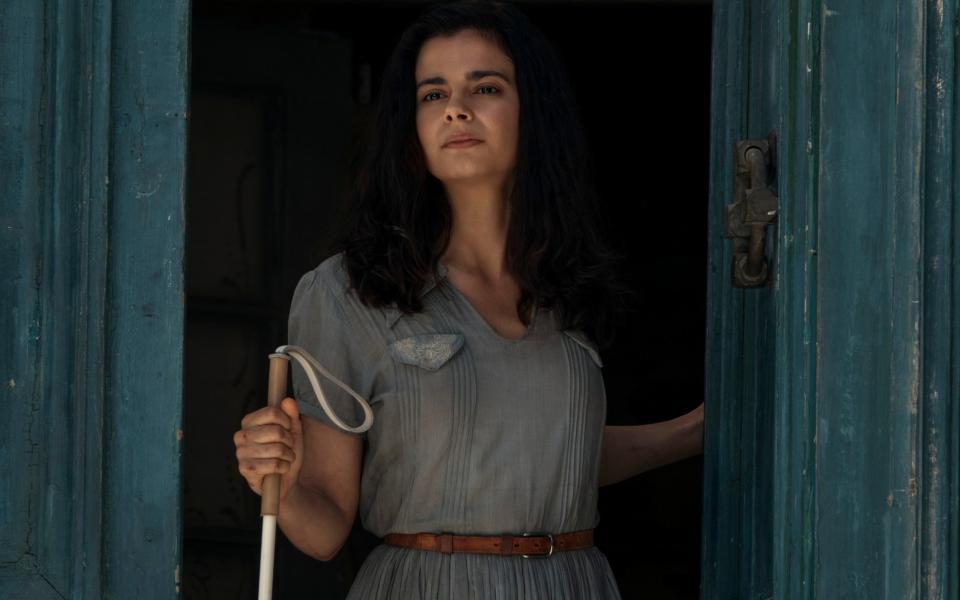Saint-Malo does blustery beauty better than anywhere else

There were pink skies at dawn as we sailed into Saint-Malo. Squat rows of terraced houses, chimneys like book spines, rose above the ramparts. The harbour bristled with sleek white yachts.
I was there to explore the town within the walls at the heart of Anthony Doerr’s Pulitzer Prize-winning war novel, All the Light We Cannot See – now a just-released Netflix series starring Hugh Laurie and Mark Ruffalo.
“Saint-Malo is a movie set. The buildings might look medieval, but 80 per cent of the town was destroyed in 1944,” said Anne-Isabelle Gendrot, my guide on this set-jetting tour of the city upon which the Allies rained bombs during the Second World War.

Saint-Malo’s dramatic tides rise and fall on a pendulum swing, scaling as much as 50ft in a day. I played tidal roulette one afternoon, island-hopping to Grand Bé, at the mouth of the River Rance. At the top of the island, the tombstone of the French writer Chateaubriand gazed out to sea. The views back to Saint-Malo were superb.
On neighbouring Petit Bé, I hoisted myself up a climbing rope, clambering up boulders wreathed in blue-shelled mussels. The 17th-century fort towered above, a high-tide line visible by the trail of orange lichen that smeared the granite-like autumn leaves. It was wonderfully blustery, the air punctuated with the Morse-code cries of gulls.
The sea was the exact shade of green that had given its name to this spill of northern Brittany – the Emerald Coast.

In the seaside resort of Dinard, the path ducked in and out beneath rocky cliffs iced with belle époque mansions. Another, in Aleth, wound past bunkers and the ruins of the cathedral to the fort used as a German stronghold during the war. “This is where the Allies were supposed to bomb,” said Gendrot.
An e-cycle to Cancale delivered the briniest dozen oysters, shucked fresh above the tidal flats cross-stitched with leases. On the return, I looped around Saint-Malo’s neat hinterland, where the French corsairs – privateers sanctioned by the crown – had built their lavish summer mansions amid exquisitely manicured gardens. The route swept past blue-shuttered cottages and freshly furrowed fields, the emerald glint of the coast never far from view.
Saint-Malo fed me well. There was buttery kouign-amann, a sweet, round cake that came hot from the oven; savoury buckwheat galettes washed down with bolées (cups) of demi-sec cider at La Duchesse Anne; and moules marinière at Café de L’Ouest, its tables buzzy day and night.

La Java was a quirky spot for a pre-dinner tipple, every spare inch of it crammed with vintage dolls, carnival memorabilia and old theatre props. Hôtel Le Grand Bê, in the city walls, was another. It had once been the government tax office, but no trace of its past remained in its art-filled lobby or subterranean spa.
On my last night, I walked the walls at sunset. The beach at Bon-Secours seemed on fire, the wet sands mirroring the blazing sun. By the time I returned, night had fallen, the world beyond the walls pitch black and silent but for the roar of the sea – waves clawing curiously at the ramparts, and behind them, a city sound asleep.
Essentials
Belinda Luksic was a guest of Bretagne Tourism. Brittany Ferries sails from Portsmouth to Saint-Malo from £43 return
Hotel Grand Be (00 33 2 23 18 99 90) has double rooms from £125 per night
The two-hour “All The Light We Cannot See” walking tour costs €8/£7 per person


